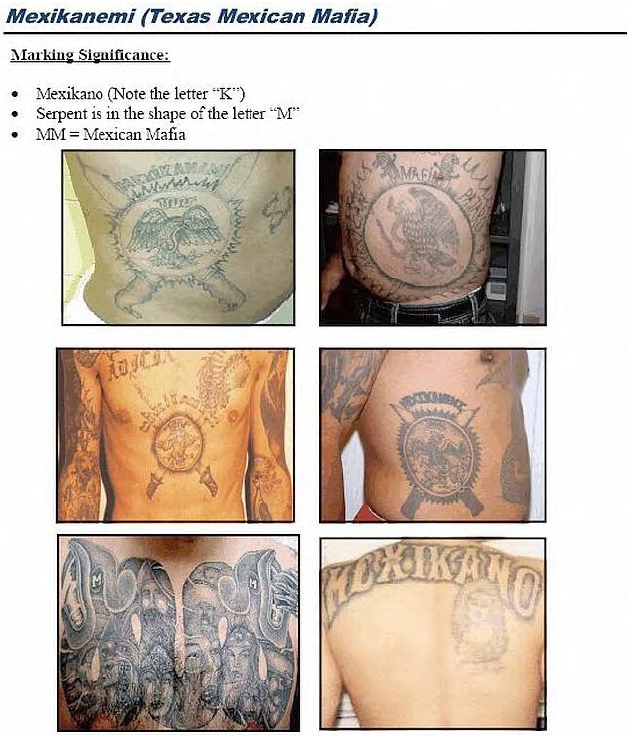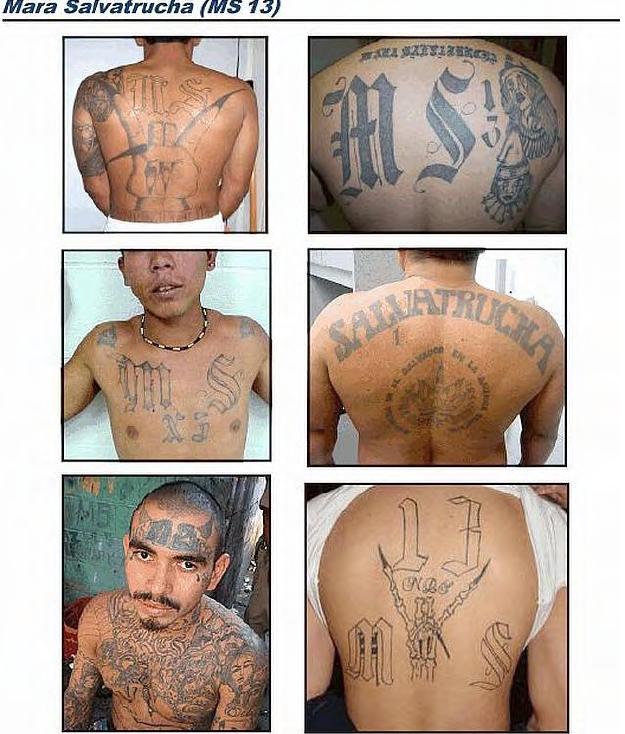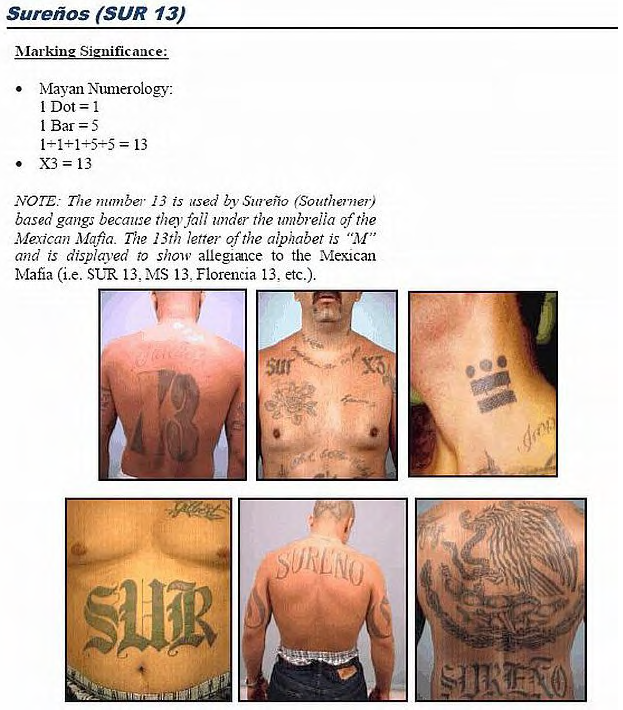Are you familiar with the clandestine world of prison gangs and the intricate symbolism that defines them? The Mexican Mafia, a formidable and often lethal prison gang, employs a complex language of symbols, tattoos, and hand signs to communicate, assert dominance, and perpetuate its criminal enterprise. This article delves into the cryptic world of the Mexican Mafia, exploring the meanings behind their tattoos, hand signs, and symbols, and uncovering the history and influence of this powerful organization.
The Mexican Mafia, also known as "La Eme," emerged in the late 1950s within the California penal system. Its influence quickly spread, establishing itself as a dominant force in both the prison environment and the streets. This organization is notorious for its ruthless violence, tight-knit structure, and intricate code of silence. Understanding their symbols is crucial to understanding the gang itself, its operations, and its impact on communities.
Their tattoos, more than just body art, are a permanent declaration of allegiance and a chronicle of a member's life within the gang. Many Mexican Mafia members bear the national symbol of Mexico, an eagle consuming a snake atop a cactus, often depicted within a flaming circle and crossed knives. This emblem is a bold statement of identity and pride, signaling their affiliation. The number 13, representing the letter "M" (the thirteenth letter of the alphabet), is another ubiquitous marker, serving as a clear and immediate identifier of their allegiance. The number can appear as a standalone figure or incorporated into other designs. Often, three dots encircling the number 13, or the phrase "Mi Vida Loca," ("My Crazy Life") symbolizes a life of crime, or more specifically, the Mexican Mafia. These tattoos are often obtained in prison, though underground tattoo artists also operate outside of correctional facilities. These tattoos, once acquired, are a permanent mark of the gangs control.
- Winning Strategies For Future Billionaires Lessons From Winning Time
- Discover The Inspiring Story Of Arlene Silver Young An Advocate For Early Childhood Education
Hand signs, or "manos," are a crucial part of Mexican gang communication, enabling members to communicate discreetly. These intricate gestures convey messages ranging from gang affiliation and territorial claims to warnings and threats. The specific configurations vary based on region and gang alliances, but these hand signs are a language of their own, which acts as an essential tool to understand the workings of gangs. These signs are essential in covertly identifying members of their own organization, expressing solidarity, or issuing threats.
The Mexican Mafia's influence extends beyond prisons, impacting communities across several states. They frequently operate in conjunction with street gangs, exerting control over drug trafficking, extortion, and other criminal activities. In this complex network of crime and power, the gang's symbols serve as a powerful means of expressing their dominance. The gang is a highly organized criminal enterprise and, by their very nature, are violent. This is demonstrated by its members willingness to engage in gang-related violence as well as the gang's commitment to preserving the gang's security and stability.
The gang has a complicated history, and it has evolved over the years. It started at the Deuel Vocational Institution in 1957. Luis "Huero Buff" Flores and other East Los Angeles gang members founded the Mexican Mafia. Later, Nuestra Familia was organized at a correctional facility in Soledad, California, in 1965. The gang has been involved in many activities, including drug trafficking, extortion, and murder, and it has caused a lot of violence in the communities where it operates.
- Beauforts Leading Real Estate Expert Clark Henderson
- Harold Ford Jr A Rising Star In Democratic Politics
Understanding the nuances of gang symbolism is of paramount importance, particularly for law enforcement, corrections officers, and community members. Decoding these signs can provide insights into gang activities, facilitate the identification of gang members, and ultimately aid in crime prevention. The symbols provide a look into the workings of the gangs and their methods. The symbols allow authorities to proactively respond to threats and protect the community from gang violence.
The Mexican Mafia, with its complex symbolism and history, represents a dark and dangerous undercurrent in the world of organized crime. Their intricate symbols act as markers of identity, allegiance, and power. They are essential components of their operations and have a wide-reaching impact on the communities they affect. This article serves as a glimpse into the world of these symbols, underscoring the critical necessity of recognizing and understanding them in the pursuit of public safety and the fight against organized crime.
| Bio Data | Details |
|---|---|
| Full Name | (Information is often kept private to protect identities. Some known figures include Luis "Huero Buff" Flores and Rene "Boxer" Enriquez.) |
| Aliases | La Eme, Mexican Mafia, The Organization |
| Date of Birth | (Information is often kept private to protect identities.) |
| Place of Origin | Primarily Southern California, but with nationwide presence |
| Nationality | Primarily Mexican-American |
| Known Associates | Various Southern California gangs, Aryan Brotherhood (allegedly) |
| Marital Status | (Information is often kept private to protect identities.) |
| Children | (Information is often kept private to protect identities.) |
| Criminal Activities | Drug trafficking, extortion, murder, racketeering, and other organized crime |
| Key Figures | Luis "Huero Buff" Flores, Rene "Boxer" Enriquez |
| Former Members | Many former members have either been killed, imprisoned for life, or have testified against the gang. |
| Notorious Acts | Extensive violence, control over drug trafficking, ordering of assassinations. |
| Symbols | Eagle with snake, flaming circle, crossed knives, number 13, three dots, hand signs. |
| Tattoos | Eagle and snake (Mexican national symbol), number 13, "La Eme," various other gang-related symbols. |
| Important Locations | California state prisons, locations where they control operations |
| Activities | Extortion, Murder, Drug trafficking |
| Key Attributes | Violence, Secrecy, Control. |
| Code of Silence | Strict adherence to a code of silence (omert) to protect members and activities. |
Reference Link:U.S. Department of Justice, National Drug Intelligence Center
- Discover The Life And Love Of Jermell Charlo Unveiling His Wife
- Unmasking The Truth Is The Face Of Horror Contest A Reality Or Illusion


